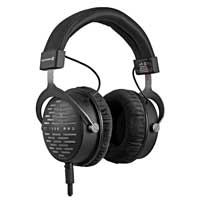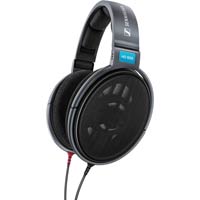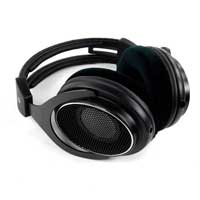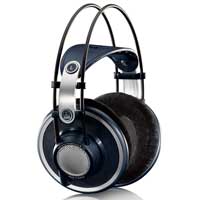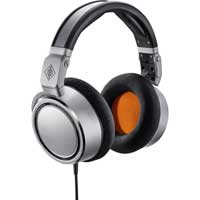Neumann NDH 30 Review: Overview
Neumann NDH 30
OUR RATING:
4.8
(out of 5)
Specs
- Impedance: 120 Ω
- Drivers: Dynamic, 38 mm, Neodymium
- Frequency range: 12 Hz – 34 kHz
- Sensitivity: 104 dB SPL
- Weight: 352 grams
- Cable length: 3 meters (straight)
Pros
- Outstanding detail resolution
- Natural, open sound
- ‘Flat’ frequency response
- Full, clear bass
Cons
- Earcups are small and circular, creating a poor seal and fit for some.
- No hard shell carry case included
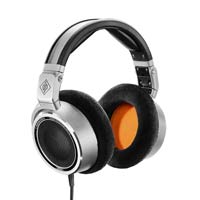
Check Price:
Bottom Line:
Reference headphones with the best detail resolution in their class, flat frequency response, and dynamic punch.
Introducing the Neumann NDH 30
The NDH 30 is an open-back version of the NDH 20 closed-back monitoring headphones released in 2018.
We are big fans of the NDH 20s so we were especially curious to see how the NDH 30 would sound.
The NDH 30 was developed in hopes of getting the reference sound of a Neumann studio monitor setup in the form of an easily transportable headphone.
We gave these headphones a thorough test drive to see how they matched up to the competition. Spoiler: we weren’t disappointed.
See here for all of our headphone and audio gear reviews.
Who are the Neumann NDH 30 headphones for?
The Neumann NDH 30 headphones are for audio enthusiasts and critical listeners.
Their open-back design allows the sound to travel past the earcup, resulting in a more natural resonance. This natural resonance is why they are the preferred design for critical listening.
Who are the Neumann NDH 30 headphones NOT for?
Due to an open-back design, the Neumann NDH 30 headphones are NOT suited for anyone in the market for a pair of headphones with good sound isolation or active noise-canceling.
The open-back design allows sound in and out. In noisy environments or for applications where you cannot tolerate sound leakage (such as tracking), these are not your cans.
These are also not consumer headphones. The frequency response is neutral, designed for critical listening.
Alternatives to the Neumann NDH 30
Open-back
Closed-back
Beyerdynamic DT 1770 Pro
If closed-back is what you need, these have a very similar sound signature and performance to the DT 1990 Pros.
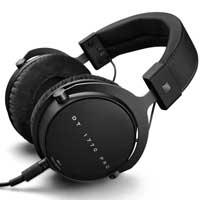
What’s in the box?
The Neumann NDH 30 come with
- The headphones
- 3-meter, cloth-covered, straight cable.
- Drawstring pouch for storage
- Foam mold in the box they arrive in
Sadly, there is no hard shell carry case, which at this price should be standard.
Build
The NDH 30 headphones are an old-school, rugged build: stainless steel and aluminum frame with perfectly circular velour ear pads. They fold up nicely due to the swivel motion of the earcups.
The headphones come with a single, straight, detachable, 3-meter, cloth-covered, internally-balanced cable. The balanced cable makes a significant improvement on the NDH 20 in terms of channel separation.
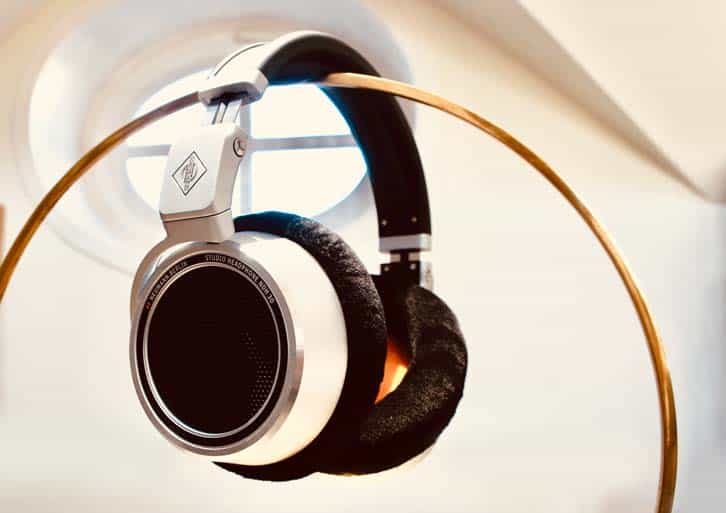
Comfort
The earpads on the NDH 30 headphones are not uncomfortable, but other reference headphones do a much better job in the comfort department. (See our Best Headphones for Mixing guide below)
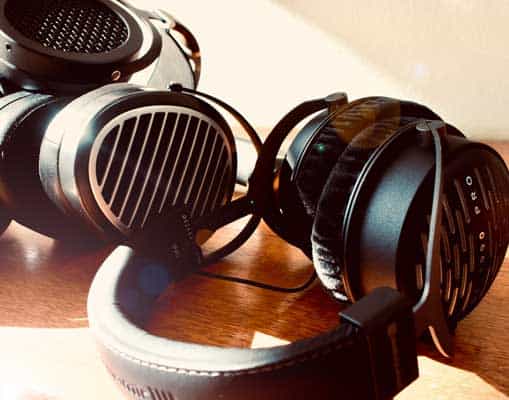
Best Headphones for Mixing
We shortlisted 10 popular cans, tested them, and carefully considered how they might affect your mix.
The clamping force of the headband was just right for my head. In this regard, they have a good balance between pressure and give.
My medium-to-large-sized ears touch the velour ear pads at the top and bottom and ever-so-slightly on the drivers inside the cups.
The circular shape of the earcup doesn’t help but also they are relatively small circles and can cramp the ear at the edges.
For shorter sessions, I could easily wear these without complaints. For longer sessions, the not-so-perfect seal with my head would annoy me.
This is the one area that keeps us from recommending these over all the other reference monitors out there. If these fit your head well, however, then you will love them.
Power Requirements
We found the NDH 30s to be relatively easy to drive. Neumann lists the impedance of these headphones at 120Ω with 104 dB SPL sensitivity.
They work without an amp but battery-powered sound sources are not recommended. For best results, a dedicated amplifier or an audio interface with an integrated amp is recommended.
These headphones scale well with the source equipment used. For example, we tried them with a SMSL SP200 amp, a Rupert Neve RNHP amp, and a Benchmark AHB2 amp. The results were progressively more impressive.
Neumann NDH 30 Frequency Response Chart
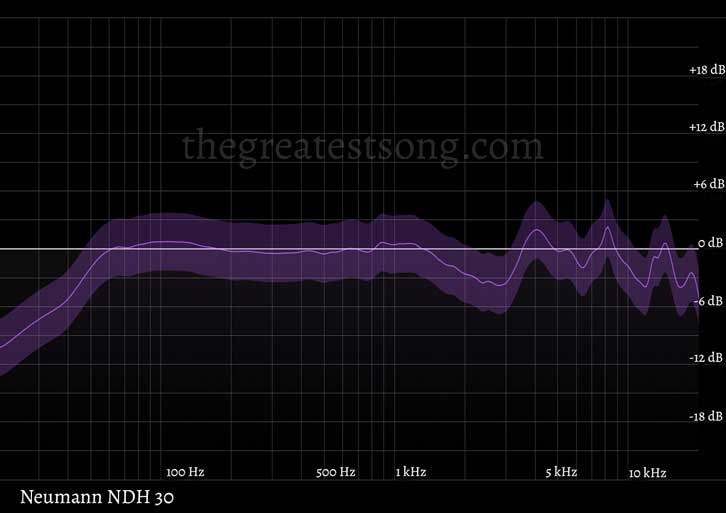
Sound
General Thoughts
Neumann says there should be very little difference between what you hear in these cans and a calibrated Neumann monitor setup.
We didn’t have Neumann monitors for this review to directly compare with, so we cannot back up this claim.
Nonetheless, we found them to be excellent monitoring tools. The NDH 30 deliver an open, natural sound with a relatively neutral frequency response.
They outclass any planar magnetic rivals in terms of dynamic punch. This goes for micro dynamics as well. For instance, listening to the Berliner Philharmonic play Beethoven’s 3rd Symphony, I could feel the exact weight of each pizzicati pluck from the strings.
From a technical perspective, they do not disappoint, with snappy transient response and a total harmonic distortion of .03%.
Detail
Perhaps the greatest quality of these cans is their high detail resolution. They have the best detail resolution that we have heard for headphones under $1000.
When I am adding subtle layers to a mix, I notice how great it is to have this kind of reference detail. For example, I was trying to decide what speed a tape saturation plugin should be set at. With the NDH 30, the process was undoubtedly easier.
Frequency Response
The highs of the NDH 30 are sparkly and full of detail.
Neumann claims that the NDH 30 uses ‘frequency-selective absorbers that eliminate the overemphasis in the high frequencies.’ While I’m wary of marketing language, I have to say these do have a slight advantage in the high frequencies over rivals like the Beyerdynamic DT 1990 or the Shure SRH1840s.
The highs deliver brilliance but are never in danger of becoming harsh or sibilant.
The midrange is equally full and detailed. The high mids have a slight 2-3 kHz dip giving vocals a very natural sound.
The bass on the NDH 30s is also impressive. It has dynamic punch and clarity. This is an area where they outdo the Beyerdynamic DT 1990 rivals simply because the bass is so clean. And, it extends nicely down, starting its sub-bass roll-off around 60 Hz.
The bass presence never sounds overdone and never overshadows the lower mids.
Soundstage and Stereo Image
Imaging was accurate without gaps and the soundstage is substantial. The soundstage is not as large as the Beyerdynamic DT 1990, but it still gives a good amount of acoustic space for individual instruments.
Conclusion: Neumann NDH 30
These would be our favorite reference headphones out there under $1000 if the earcup design were slightly better.
That said, these are still some of the best in their class. They are more exciting to listen to and more detailed than their closed-back predecessor, the NDH 20.
As reference tools, these headphones have all the traits you’re looking for: flat frequency response, outstanding detail resolution, and an extensive soundstage with very accurate, consistent imaging.
Neumann NDH 30

How we Tested the Neumann NDH 30 Headphones
As a reminder, we test everything on this site ourselves.
These headphones were tested under controlled conditions in a sound-treated room and also in a noisy household environment.
Don’t believe any ‘objective’ measurements you see about headphones! The shape of your head and ears alone will have a significant effect on frequency response and other factors. Therefore, all headphone reviews are subjective, this one being no exception.
Our comparisons for the Neumann NDH 30 headphones were limited primarily to other open-back planar magnetic and dynamic driver headphones in the same class. Although we did directly compare a few closed-back and consumer headphones just to keep our ears honest.
In addition to testing these headphones on music of all styles, we conduct extensive clinical tests on frequency response, dynamic range, driver matching, harmonic distortion, binaural tests, wiring, and stereo imaging.
Our rating assumes that you value sound quality above all other factors, followed by comfort/build, then price.
Questions or Comments?
Join the discussion here on Facebook.
